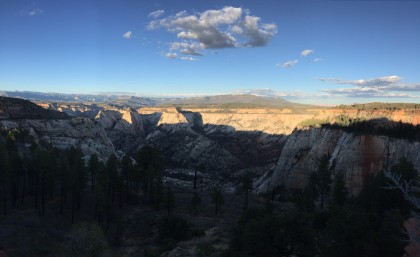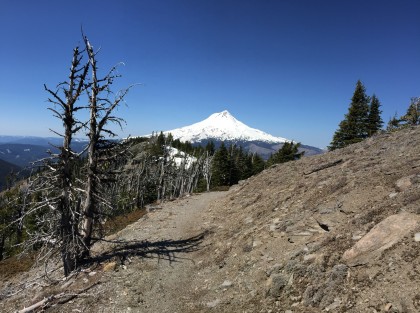At a glance
[/mk_fancy_title][mk_milestone style=”classic” start=”0″ stop=”9″ speed=”2000″ number_size=”46″ type=”text” icon_size=”16″ text=”Distance (miles)” number_suffix_text_size=”12″ text_size=”12″ color=”#919191″ border_bottom=”#eeeeee”][mk_milestone style=”classic” start=”0″ stop=”4788″ speed=”2000″ number_size=”46″ type=”text” icon_size=”16″ text=”Elevation gain (feet)” number_suffix_text_size=”12″ text_size=”12″ color=”#919191″ border_bottom=”#eeeeee”][mk_milestone style=”classic” start=”0″ stop=”9″ speed=”2000″ number_size=”46″ type=”text” icon_size=”16″ text=”Hike time (hours)” number_suffix_text_size=”12″ text_size=”12″ color=”#919191″ border_bottom=”#eeeeee”][/vc_column_inner][vc_column_inner el_class=”” width=”1/3″][mk_fancy_title style=”simple” corner_style=”pointed” tag_name=”h3″ border_width=”3″ size=”14″ line_height=”24″ color=”#393836″ font_weight=”inherit” letter_spacing=”0″ font_family=”none” margin_top=”10″ margin_bottom=”10″ align=”left” responsive_align=”center”]Relative difficulty
[/mk_fancy_title][vc_progress_bar values=”90|Beginner|#FAAC58,75|Intermediate|#F4FA58,60|Experienced|#81F79F” bgcolor=”bar_grey” options=”” units=”%”][/vc_column_inner][vc_column_inner el_class=”” width=”1/3″][mk_fancy_title style=”simple” corner_style=”pointed” tag_name=”h3″ border_width=”3″ size=”14″ line_height=”24″ color=”#393836″ font_weight=”inherit” letter_spacing=”0″ font_family=”none” margin_top=”10″ margin_bottom=”10″ align=”left” responsive_align=”center”]When to go
[/mk_fancy_title][vc_progress_bar values=”75|Spring|#81F79F,100|Summer|#F4FA58,75|Fall|#FAAC58,25|Winter|#A9F5F2″ bgcolor=”bar_grey” options=””][/vc_column_inner][/vc_row_inner][vc_raw_html]JTNDaWZyYW1lJTIwaWQlM0QlMjJmb3JlY2FzdF9lbWJlZCUyMiUyMHNyYyUzRCUyMmh0dHAlM0ElMkYlMkZmb3JlY2FzdC5pbyUyRmVtYmVkJTJGJTIzbGF0JTNENDYuNzg2OSUyNmFtcCUzQmxvbiUzRC0xMjEuNzM0NCUyNmFtcCUzQm5hbWUlM0RQYXJhZGlzZSUyQyUyMFdhc2hpbmd0b24lMjZhbXAlM0Jjb2xvciUzRCUyMzAwYWFmZiUyMiUyMHdpZHRoJTNEJTIyMTAwJTI1JTIyJTIwaGVpZ2h0JTNEJTIyMjQ1JTIyJTIwZnJhbWVib3JkZXIlM0QlMjIwJTIyJTNFJTIwJTNDJTJGaWZyYW1lJTNF
[/vc_raw_html][mk_fancy_title style=”avantgarde” corner_style=”pointed” tag_name=”h3″ border_width=”3″ size=”8″ line_height=”24″ color=”#393836″ font_weight=”inherit” letter_spacing=”0″ font_family=”none” margin_top=”10″ margin_bottom=”10″ align=”center” responsive_align=”center”]ADVERTISEMENTS
[/mk_fancy_title][vc_raw_html]JTNDc2NyaXB0JTIwYXN5bmMlMjBzcmMlM0QlMjIlMkYlMkZwYWdlYWQyLmdvb2dsZXN5bmRpY2F0aW9uLmNvbSUyRnBhZ2VhZCUyRmpzJTJGYWRzYnlnb29nbGUuanMlMjIlM0UlM0MlMkZzY3JpcHQlM0UlMEElM0MlMjEtLSUyMEhvbWUlMjBwYWdlJTIwcmVzcG9uc2l2ZSUyMGFkJTIwLS0lM0UlMEElM0NpbnMlMjBjbGFzcyUzRCUyMmFkc2J5Z29vZ2xlJTIyJTBBJTIwJTIwJTIwJTIwJTIwc3R5bGUlM0QlMjJkaXNwbGF5JTNBYmxvY2slMjIlMEElMjAlMjAlMjAlMjAlMjBkYXRhLWFkLWNsaWVudCUzRCUyMmNhLXB1Yi01NTM4NTAwNTg3MTA4NTQ2JTIyJTBBJTIwJTIwJTIwJTIwJTIwZGF0YS1hZC1zbG90JTNEJTIyMjU5Nzg2MTMxMSUyMiUwQSUyMCUyMCUyMCUyMCUyMGRhdGEtYWQtZm9ybWF0JTNEJTIyYXV0byUyMiUzRSUzQyUyRmlucyUzRSUwQSUzQ3NjcmlwdCUzRSUwQSUyOGFkc2J5Z29vZ2xlJTIwJTNEJTIwd2luZG93LmFkc2J5Z29vZ2xlJTIwJTdDJTdDJTIwJTVCJTVEJTI5LnB1c2glMjglN0IlN0QlMjklM0IlMEElM0MlMkZzY3JpcHQlM0U=
[/vc_raw_html][/vc_column][/mk_page_section][mk_page_section layout_structure=”full” bg_image=”https://wanderlusthiker.com/wp-content/uploads/2015/10/vlcsnap-error565.png” attachment=”scroll” bg_position=”center bottom” bg_repeat=”no-repeat” bg_stretch=”true” parallax=”false” parallax_direction=”vertical” bg_video=”no” mask=”false” mask_opacity=”0.6″ expandable=”false” expandable_icon=”mk-theme-icon-plus” expandable_icon_size=”16″ expandable_txt_align=”left” expandable_txt_size=”16″ padding=”20″ full_height=”true” full_width=”true” intro_effect=”false”][vc_column border_color=”” visibility=”” width=”1/1″][vc_column_text] [/vc_column_text][/vc_column][/mk_page_section][mk_page_section layout_structure=”full” bg_color=”” bg_image=”” border_color=”” attachment=”scroll” bg_position=”left top” bg_repeat=”repeat” bg_stretch=”false” parallax=”false” parallax_direction=”vertical” bg_video=”no” mp4=”” webm=”” ogv=”” poster_image=”” mask=”false” color_mask=”” mask_opacity=”0.6″ expandable=”false” expandable_txt=”” expandable_image=”” expandable_icon=”mk-theme-icon-plus” expandable_icon_size=”16″ expandable_txt_align=”left” expandable_txt_color=”” expandable_txt_size=”16″ padding=”20″ full_height=”false” full_width=”false” intro_effect=”false” section_id=”” visibility=”” el_class=””][vc_column border_color=”” visibility=”” width=”1/1″][mk_fancy_title style=”simple” corner_style=”pointed” tag_name=”h1″ border_width=”3″ size=”14″ line_height=”24″ color=”#393836″ font_weight=”inherit” letter_spacing=”0″ font_family=”none” margin_top=”10″ margin_bottom=”10″ align=”left” responsive_align=”center”]What is it?
[/mk_fancy_title][vc_column_text responsive_align=”left”]Camp Muir (10,188′), named after the naturalist John Muir, is a high-altitude refuge on Mount Rainier (14,409′) and is a common base camp for attempts on the summit. The camp is comprised of several stone shelters and pit toilets, the oldest of which was built in 1916. The public structures are available on a first come first served basis and are also subject to seasonal and storm-related closure. In other words, don’t depend on shelter space being available. Be prepared to camp in a tent on the Cowlitz glacier nearby. [mk_image src=”https://wanderlusthiker.com/wp-content/uploads/2015/10/012de22037cfa165d98f05190bafb658ac938a34f5.jpg” image_width=”100%” image_height=”750″ crop=”true” hover=”true” align=”center” margin_bottom=”10″]As with most mountain hikes, total mileage is less important and it becomes more about elevation. At Wanderlusthiker, we recognize that challenge rests in the perspective of the hiker and if you’re no stranger to alpine hiking than this will be old hat.
The hike starts from the parking lots of Paradise, Washington (5,400′). This is where most climbers leave their vehicles, say goodbye to their loved ones, and begin their trek up the mountain. The loved ones presumably wander off to enjoy a warm treat at the Tatoosh Café inside Paradise Inn.
The route to Camp Muir ascends 4,788′ over 4.5 miles of mixed pavement, rock, dirt, scree, snow and ice. Can you do it without shoe spikes or crampons? Yes, however it creates additional challenge and increases risk. We also recommend trekking poles for improved stability and to give your legs a break.
That being said, the payoff for the hard work of hiking to Camp Muir is immense. An up-close and personal experience on the mountain is afforded to those that complete this hike. Waiting at the camp is an incredible vantage point in the heart of the Pacific Northwest that only 10,000′ above sea level can provide.
[mk_image src=”https://wanderlusthiker.com/wp-content/uploads/2015/10/IMG_0116.jpg” image_width=”400″ image_height=”500″ crop=”true” hover=”true” align=”center” margin_bottom=”10″][/vc_column_text][/vc_column][/mk_page_section][mk_page_section layout_structure=”full” bg_color=”” bg_image=”” border_color=”” attachment=”scroll” bg_position=”left top” bg_repeat=”repeat” bg_stretch=”false” parallax=”false” parallax_direction=”vertical” bg_video=”no” mp4=”” webm=”” ogv=”” poster_image=”” mask=”false” color_mask=”” mask_opacity=”0.6″ expandable=”false” expandable_txt=”” expandable_image=”” expandable_icon=”mk-theme-icon-plus” expandable_icon_size=”16″ expandable_txt_align=”left” expandable_txt_color=”” expandable_txt_size=”16″ padding=”20″ full_height=”false” full_width=”false” intro_effect=”false” section_id=”” visibility=”” el_class=””][vc_column border_color=”” visibility=”” width=”1/1″][mk_fancy_title style=”simple” corner_style=”pointed” tag_name=”h1″ border_width=”3″ size=”14″ line_height=”24″ color=”#393836″ font_weight=”inherit” letter_spacing=”0″ font_family=”none” margin_top=”10″ margin_bottom=”10″ align=”left” responsive_align=”center”]Where is it?
[/mk_fancy_title][vc_column_text responsive_align=”left”]Camp Muir is located on the south side of Mt. Rainier. The most straightforward route to Camp Muir starts at the base of the mountain in Paradise, Washington. From Paradise, there are several different routes that follow the same upward route to Camp Muir, we’ll get to that.The route to Paradise is well marked. However, it is recommended that you stop at Longmire on your way through Mt. Rainier National Park. Speak with a ranger about your trip and obtain a Wilderness Permit (free) before proceeding.[/vc_column_text][vc_column_text responsive_align=”center”]
[/vc_column_text][mk_fancy_title style=”avantgarde” corner_style=”pointed” tag_name=”h3″ border_width=”3″ border_color=”” size=”8″ line_height=”24″ color=”#393836″ font_weight=”inherit” text_transform=”” letter_spacing=”0″ font_family=”none” font_type=”” margin_top=”10″ margin_bottom=”10″ align=”center” responsive_align=”center” animation=”” el_class=””]ADVERTISEMENTS
[/mk_fancy_title][vc_raw_html]JTNDc2NyaXB0JTIwYXN5bmMlMjBzcmMlM0QlMjIlMkYlMkZwYWdlYWQyLmdvb2dsZXN5bmRpY2F0aW9uLmNvbSUyRnBhZ2VhZCUyRmpzJTJGYWRzYnlnb29nbGUuanMlMjIlM0UlM0MlMkZzY3JpcHQlM0UlMEElM0MlMjEtLSUyMEhvbWUlMjBwYWdlJTIwcmVzcG9uc2l2ZSUyMGFkJTIwLS0lM0UlMEElM0NpbnMlMjBjbGFzcyUzRCUyMmFkc2J5Z29vZ2xlJTIyJTBBJTIwJTIwJTIwJTIwJTIwc3R5bGUlM0QlMjJkaXNwbGF5JTNBYmxvY2slMjIlMEElMjAlMjAlMjAlMjAlMjBkYXRhLWFkLWNsaWVudCUzRCUyMmNhLXB1Yi01NTM4NTAwNTg3MTA4NTQ2JTIyJTBBJTIwJTIwJTIwJTIwJTIwZGF0YS1hZC1zbG90JTNEJTIyMjU5Nzg2MTMxMSUyMiUwQSUyMCUyMCUyMCUyMCUyMGRhdGEtYWQtZm9ybWF0JTNEJTIyYXV0byUyMiUzRSUzQyUyRmlucyUzRSUwQSUzQ3NjcmlwdCUzRSUwQSUyOGFkc2J5Z29vZ2xlJTIwJTNEJTIwd2luZG93LmFkc2J5Z29vZ2xlJTIwJTdDJTdDJTIwJTVCJTVEJTI5LnB1c2glMjglN0IlN0QlMjklM0IlMEElM0MlMkZzY3JpcHQlM0U=
[/vc_raw_html][mk_fancy_title style=”simple” corner_style=”pointed” tag_name=”h1″ border_width=”3″ size=”14″ line_height=”24″ color=”#393836″ font_weight=”inherit” letter_spacing=”0″ font_family=”none” margin_top=”10″ margin_bottom=”10″ align=”left” responsive_align=”center”]How did we do it?
[/mk_fancy_title][vc_column_text responsive_align=”left”]As we mentioned earlier, alpine hikes have an inherent level of risk which is impossible to eliminate, but it can be minimized with preparation. Many complete this as a day-hike and we’re sure it’s been done in flip flops and board shorts, but we leave those kinds of shenanigans to those that have their risk tolerance dialed in.We recommend a well-rounded approach that allows you to be prepared for nearly all scenarios.
[mk_image src=”https://wanderlusthiker.com/wp-content/uploads/2015/10/013a7d205579b9aef1b16942218e1c7a6d9f86177e.jpg” image_width=”100%” image_height=”800″ crop=”true” hover=”true” align=”center” margin_bottom=”10″][/vc_column_text][mk_fancy_title style=”simple” corner_style=”pointed” tag_name=”h2″ border_width=”3″ size=”14″ line_height=”24″ color=”#393836″ font_weight=”inherit” letter_spacing=”0″ font_family=”none” margin_top=”10″ margin_bottom=”10″ align=”left” responsive_align=”center”]Route
[/mk_fancy_title][vc_column_text responsive_align=”left”][mk_image src=”https://wanderlusthiker.com/wp-content/uploads/2015/10/Camp_Muir_Trail_Map.png” image_width=”396″ image_height=”978″ crop=”true” hover=”true” align=”right” margin_bottom=”10″]There is no “Camp Muir Trail”, there is simply a recommended path from Paradise to the camp. The initial sections of the route are composed of a web of trails that intersect and wander off in various directions, most leading back to Paradise. The most straightforward route is to follow the Skyline Trail until it breaks away on to the unmarked route to Camp Muir. Up to this point, if you have functional vision you will be able to see a clear path.
However, once you take the turnoff to Camp Muir the trail begins to fade. During peak climbing season (spring, summer, fall) you might be fortunate enough to follow a well-chiseled foot path that roughly follows the unmarked route to Camp Muir. You might even be able to follow other climbers. But what if you do not have these options?
[mk_image src=”https://wanderlusthiker.com/wp-content/uploads/2015/10/vlcsnap-error862.png” image_width=”100%” image_height=”700″ crop=”true” hover=”true” align=”left” margin_bottom=”10″]Getting lost on a mountain is frustrating at best and dangerous at worst. Even ideal conditions at high elevations can change rapidly. An otherwise overcast day can switch to white out conditions faster than you can hope to climb down the mountain.
That’s why we picked this National Park Service (NPS) map. We like it for a lot of reasons. It has compass bearings, GPS coordinates, altitude lines, and indicators for prominent land marks and water crossings.
At some point, we will publish an article that describes how to use a compass and a GPS to navigate, but for now you’ll have to use the power of Google and Youtube.
[mk_image src=”https://wanderlusthiker.com/wp-content/uploads/2015/10/vlcsnap-error673.png” image_width=”100%” image_height=”700″ crop=”true” hover=”true” align=”left” margin_bottom=”10″][/vc_column_text][mk_fancy_title style=”avantgarde” corner_style=”pointed” tag_name=”h3″ border_width=”3″ border_color=”” size=”8″ line_height=”24″ color=”#393836″ font_weight=”inherit” text_transform=”” letter_spacing=”0″ font_family=”none” font_type=”” margin_top=”10″ margin_bottom=”10″ align=”center” responsive_align=”center” animation=”” el_class=””]ADVERTISEMENTS
[/mk_fancy_title][vc_raw_html]JTNDc2NyaXB0JTIwYXN5bmMlMjBzcmMlM0QlMjIlMkYlMkZwYWdlYWQyLmdvb2dsZXN5bmRpY2F0aW9uLmNvbSUyRnBhZ2VhZCUyRmpzJTJGYWRzYnlnb29nbGUuanMlMjIlM0UlM0MlMkZzY3JpcHQlM0UlMEElM0MlMjEtLSUyMEhvbWUlMjBwYWdlJTIwcmVzcG9uc2l2ZSUyMGFkJTIwLS0lM0UlMEElM0NpbnMlMjBjbGFzcyUzRCUyMmFkc2J5Z29vZ2xlJTIyJTBBJTIwJTIwJTIwJTIwJTIwc3R5bGUlM0QlMjJkaXNwbGF5JTNBYmxvY2slMjIlMEElMjAlMjAlMjAlMjAlMjBkYXRhLWFkLWNsaWVudCUzRCUyMmNhLXB1Yi01NTM4NTAwNTg3MTA4NTQ2JTIyJTBBJTIwJTIwJTIwJTIwJTIwZGF0YS1hZC1zbG90JTNEJTIyMjU5Nzg2MTMxMSUyMiUwQSUyMCUyMCUyMCUyMCUyMGRhdGEtYWQtZm9ybWF0JTNEJTIyYXV0byUyMiUzRSUzQyUyRmlucyUzRSUwQSUzQ3NjcmlwdCUzRSUwQSUyOGFkc2J5Z29vZ2xlJTIwJTNEJTIwd2luZG93LmFkc2J5Z29vZ2xlJTIwJTdDJTdDJTIwJTVCJTVEJTI5LnB1c2glMjglN0IlN0QlMjklM0IlMEElM0MlMkZzY3JpcHQlM0U=
[/vc_raw_html][mk_fancy_title style=”simple” corner_style=”pointed” tag_name=”h2″ border_width=”3″ size=”14″ line_height=”24″ color=”#393836″ font_weight=”inherit” letter_spacing=”0″ font_family=”none” margin_top=”10″ margin_bottom=”10″ align=”left” responsive_align=”center”]Food & Water
[/mk_fancy_title][vc_column_text responsive_align=”left”]On most backpacking trips I like to carry a medley of freeze dried meals. These foods are light weight and pack a big calorie punch but do not necessarily contain all of the nutrients that the body needs to refuel properly. They also often have a lot of artificial ingredients.One variable that can magnify the stress of an already challenging hike is an uneven energy curve. If you’ve ever consumed an energy drink and felt the initial explosive rush and then dramatic crash afterward, hiking without the proper nutrients is a little like that except you’re stuck on a glacier wondering if you will have the energy to make it to your destination. No bueno.
[mk_image src=”https://wanderlusthiker.com/wp-content/uploads/2015/10/cliche-tshirt-is-cliche.png” image_width=”500″ image_height=”400″ crop=”true” hover=”true” align=”right” margin_bottom=”10″]Dropping large calorie loads on your system can create a similar affect, leading to intense energy bursts and then lethargic slumps. Many experienced backpackers recommend eating small portions frequently to maintain consistent energy levels while on extended or strenuous hiking trips.
This time I experimented with an array of nutrient-balanced, high calorie snacks with no large meals. I was aiming for a good balance of fats, carbs, and protein and it worked brilliantly. I felt great, it reduced my overall risk on the mountain, and I was able to keep moving.
Food items included:
- Peanut butter pretzel bits
- Salty pepper somersaults
- Veggie straws
- Organic chocolate pop-tarts
- Organic berry instant oatmeal in a cup
- Vanilla chai latte drink mix
- Trio bars
Water is heavy. The less of it you can carry, especially at elevation, the better. The good news is there’s snow and ice on mountains, the bad news is you can burn snow if you’re not careful. Nobody likes the taste of burnt snow.
[mk_image src=”https://wanderlusthiker.com/wp-content/uploads/2015/10/01798d9e38b1a86991bb32a5f793fc1ff33ab078b5.jpg” image_width=”100%” image_height=”700″ crop=”true” hover=”true” align=”center” margin_bottom=”10″]It takes water to make water. All you need is a tiny bit to mix in with your snow or ice in order to melt it down and “create” more water. Fortunately, I had packed 3 liters, drank 2.75, and was able to melt enough glacier bits with a Jetboil to generate all the water I would need for the trip back to Paradise.
The only limitation of this method is fuel. It takes a fair amount of heat to melt ice in a reasonable amount of time, so it’s important to gauge how much fuel will be required for your alpine backpacking trip. Since I only stayed at Camp Muir for a night, my single, small canister of Jet fuel was more than adequate.
One last thought. Handle boiling water with care. The last thing you want is to scald yourself on a mountain in the midst of a viciously hateful snow storm.[/vc_column_text][mk_fancy_title style=”simple” corner_style=”pointed” tag_name=”h2″ border_width=”3″ size=”14″ line_height=”24″ color=”#393836″ font_weight=”inherit” letter_spacing=”0″ font_family=”none” margin_top=”10″ margin_bottom=”10″ align=”left” responsive_align=”center”]
Gear
[/mk_fancy_title][vc_column_text responsive_align=”left”]We love gear. What backpacker doesn’t? Total weight was 37.44 lbs. This does not include the weight of the clothing that was worn.| Description | Weight (oz) | Weight (lbs) |
| Osprey 85 Aether Pack | 77 | 4.81 |
| Marmot Earlylight 2P Tent | 76 | 4.75 |
| Marmot Sawtooth Sleeping Bag 14 degrees Long | 46 | 2.88 |
| Thermarest Stuff Sack Pillow | 2.7 | 0.17 |
| Sea To Summit AlphaLight Long Spoon | 0.4 | 0.03 |
| Jetboil Zip Personal Cook System | 12 | 0.75 |
| Coleman Exponent Hand Trowel Shovel | 6 | 0.38 |
| Omega Pacific – Mountain axe – 80 cm | 25 | 1.56 |
| Adventure Medical Kits UltraLight / Watertight .5 First-Aid Kit | 3.68 | 0.23 |
| Black Diamond ReVolt headlamp | 3.5 | 0.22 |
| Mountainsmith Pinnacle trekking poles | 24 | 1.50 |
| LifeStraw Personal Water Filter | 2 | 0.13 |
| Outdoor Products 2 liter hydration bladder | 6 | 0.38 |
| Thermarest ProLite 4 Regular self-inflating sleeping pad | 16 | 1.00 |
| Misc – Fire starter kit, knife, pen, pocket notebook, wallet, toilet paper, caribiners | 16 | 1.00 |
| Hillsound – Trail spikes | 15.7 | 0.98 |
| Manzella Fahrenheit 5 TouchTip gloves | 7.2 | 0.45 |
| iPhone 6 + case | 5 | 0.31 |
| GoPro Hero4 Silver | 2.1 | 0.13 |
| Wasabi Power Pack – 2 GoPro batteries plus charging kit | 1.6 | 0.10 |
| Parrot Bebop drone | 14.1 | 0.88 |
| Albinair 5200 camera tripod | 48 | 3.00 |
| Fotodiox Pro SlideCam 600 24″ slider | 67.2 | 4.20 |
| 3 liters of water x 2.205 pounds x 16 oz | 105.84 | 6.62 |
| 1 day of food @ 2 lbs per day x 16 oz | 16 | 2.00 |
Clothing:
- Core layers – Non-cotton t-shirt base, Mountain Hardwear long sleeve button up shirt, black CIRQ long sleeve jacket, CIRQ puffy down jacket
- Leg layers – Wool socks, Columbia insulated & waterproof boots, boyscout pants, O’Neil snow pants
- Misc – Snow gloves, beanie, goggles, gators
The Experience
[/mk_fancy_title][vc_column_text responsive_align=”left”]Saturday, October 3rd, 2015 7:04 PM [mk_blockquote align=”left”]Upon arrival at Camp Muir, I had no other thought on my mind other than to set up camp in a quiet place and rest. In fact, as I write this, I’ve been at Camp Muir for nearly 4 hours and all I’ve accomplished is a nap.The hike, even at this time of year, was brutal. With a full pack I was at a speed disadvantage compared to the day hikers. At around 8,000 feet movement started to become noticeably more difficult. At 10,000 feet, I rounded the bend on Muir Snowfield and could see the shelter, but muscle fatigue was setting in and oxygen was clearly becoming more scarce.
I woke just as the U.S. military arrived to occupy the remaining space in the shelter. Prior to their arrival I was the only person in camp. It should be an interesting night.[/mk_blockquote]
What most people were surprised to hear was that I was not making an attempt on the summit.
“You’ve got the gear, man! I bet you could do it.”
No. That would be silly and reckless. This trip was purely expeditionary; a scouting mission to see what the path to the summit might look like. Without a climbing permit, I could not ascend past 10,000 feet anyway, so I was also bound by my word to the park service.
Conditions were, by most accounts, ideal. Clouds were few and far between, the wind was nippy but not violent, and the bright, early fall sun produced acceptable temperatures for my layers to withstand.
As much as the offer to join the military unit for snow training was tempting, I knew I was not prepared for full mountain fun times. You know, things like ropes, harnesses, and aggressive, ice ax self-arrests. But my god would it have been educational.
The end goal of this trip was to learn, but it wasn’t to learn mountaineering. It was to learn about the mountain itself.
[mk_image src=”https://wanderlusthiker.com/wp-content/uploads/2015/10/vlcsnap-error633.png” image_width=”100%” image_height=”100%” crop=”true” hover=”true” align=”center” margin_bottom=”10″]First off: flags.
“Are you guys doing some kind of trail maintenance with those?” I asked the group leader.
“No, these are to mark the trail back and to create a perimeter around our campsite higher up on the mountain,” he responded.
It was simple and brilliant. In fact, on my way down the mountain the following day, I would use these flags as guides when the path became difficult to detect.
[mk_image src=”https://wanderlusthiker.com/wp-content/uploads/2015/10/vlcsnap-error949.png” image_width=”100%” image_height=”100%” crop=”true” hover=”true” align=”center” margin_bottom=”10″]Second: training.
Ultimately, this is leading up to a summit attempt, but before that happens the team that we take will need to train together. There is a bundle of skills required that are a level above standard backpacking. When you are roped to your fellow hiker and one of them slips, the rest need to know what to do in an instant.
[mk_image src=”https://wanderlusthiker.com/wp-content/uploads/2015/10/vlcsnap-error095.png” image_width=”100%” image_height=”100%” crop=”true” hover=”true” align=”center” margin_bottom=”10″]Finally: shelter.
Camping on the side of a mountain is a special kind of struggle. Even in a stone shelter there is a constant battle against the cold.
“Imagine boiling water, cooking meals, and preparing gear in a small tent out on one of these glaciers,” I said.
“I’m not looking forward to it,” said one of the team.
“Yeah, but it’ll be an experience for sure!” I said laughing.
Shelter isn’t just a four season tent or bivvy, it’s proper cold weather gear. My light weight down jacket, snow pants, and gloves were fine for sub-freezing temperatures with low wind, but conditions can be much worse.
In the dead of night at 4 in the morning, we thought Mt. Hood in mid-spring was cold. Mt. Rainier is a whole other beast.[/vc_column_text][/vc_column][/mk_page_section][mk_page_section layout_structure=”full” bg_image=”https://wanderlusthiker.com/wp-content/uploads/2015/10/vlcsnap-error000.png” attachment=”scroll” bg_position=”right center” bg_repeat=”no-repeat” bg_stretch=”true” parallax=”false” parallax_direction=”vertical” bg_video=”no” mask=”false” mask_opacity=”0.6″ expandable=”false” expandable_icon=”mk-theme-icon-plus” expandable_icon_size=”16″ expandable_txt_align=”left” expandable_txt_size=”16″ padding=”20″ full_height=”true” full_width=”true” intro_effect=”false”][vc_column border_color=”” visibility=”” width=”1/1″][vc_column_text responsive_align=”center” animation=”” visibility=”” el_class=””] [/vc_column_text][/vc_column][/mk_page_section][mk_page_section layout_structure=”full” bg_color=”” bg_image=”” border_color=”” attachment=”scroll” bg_position=”left top” bg_repeat=”repeat” bg_stretch=”false” parallax=”false” parallax_direction=”vertical” bg_video=”no” mp4=”” webm=”” ogv=”” poster_image=”” mask=”false” color_mask=”” mask_opacity=”0.6″ expandable=”false” expandable_txt=”” expandable_image=”” expandable_icon=”mk-theme-icon-plus” expandable_icon_size=”16″ expandable_txt_align=”left” expandable_txt_color=”” expandable_txt_size=”16″ padding=”20″ full_height=”false” full_width=”false” intro_effect=”false” section_id=”” visibility=”” el_class=””][vc_column border_color=”” visibility=”” width=”1/1″][mk_fancy_title style=”simple” corner_style=”pointed” tag_name=”h1″ border_width=”3″ size=”14″ line_height=”24″ color=”#393836″ font_weight=”inherit” letter_spacing=”0″ font_family=”none” margin_top=”10″ margin_bottom=”10″ align=”left” responsive_align=”center”]
Trail Tips
[/mk_fancy_title][vc_column_text responsive_align=”left”]- No camp chair – At no point did I think: “I wish I could just sit outside in sub-freezing temperatures with the wind blowing.”
- Pack light – Every pound of gear you bring feels multiplied when ascending higher and higher on a mountain.
- No tents in shelter – Just don’t. You may feel like you’re in the penthouse suite, but everyone else just thinks you look like a prat.
- Drones are illegal in national parks – In case you forgot.
- Bring sunscreen – At higher elevations the sun’s rays become more intense. Don’t become a burn victim.
- Crevasses – Avoid them. Whenever you see one, imagine being wedged between two huge slabs of ice.


